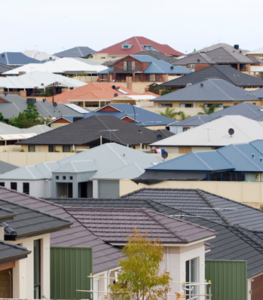Victoria set for significant population growth
The number of households in Victoria will almost double from 2.4 to 4.6 million from but households will be smaller; the overall population will increase from 6.5 million to 11.2 million, and; inward migration will account for twice as much of the growth as natural births.
These are key predictions of a landmark study looking ahead at Victoria’s population growth to 2056.
The ‘Victoria in Future 2019: Population Projections 2016 to 2056’ report says that Victoria has been growing by more and at a faster rate than any other state or territory at up to 150,000 people a year.
It says the state has grown by a million people since 2011 and is expected to add another million by 2026. And it is projected to add 4.7 million people from 2018 to 2056, reaching a population of 11.2 million.
“This represents annual average growth of 125,000 people, at a rate of 1.5 per cent per annum,” the report says.
 The composition, or characteristics, of the population can be just as important as the size or the growth rate and places with the same population size may require different services and infrastructure depending on the mix of ages and household types, the report says.
The composition, or characteristics, of the population can be just as important as the size or the growth rate and places with the same population size may require different services and infrastructure depending on the mix of ages and household types, the report says.
“The median age in Victoria is 36 – young by standards in the developed world. Almost two thirds of Victoria’s population is within the key working ages of 18 to 64 years, while fewer than one of every six Victorians is aged 65 years or over,” it says.
But by 2056 the population will have aged significantly by proportions, particularly as the large ‘baby boomer’ cohort moves into the oldest age group.
The absolute numbers in the younger age categories are still expected to increase strongly. An additional 560,000 people are expected at school ages.
Population numbers at older ages will increase greatly in both number and share. The number aged 65 years and over will triples over the period to 2056 and the number aged 85 years and over will almost quadruples, the report reveals.
By 2056 the median age of Victorians is projected to increase to 41.
“The number of households in Victoria is projected to almost double from 2.4 to 4.6 million from 2016 to 2056, but households are expected to be smaller,” the report says.
“Older Victorians are more likely to live in a one-or two-person household than a larger household so, as the population ages, both the number and the proportion of these households increase. The average size of a household will therefore decrease: from 2.54 persons per household in Victoria in 2016 to 2.40 in 2056,” it says.
The report says the proportion of families with children will decrease over time, but the actual number will increases by 82 per cent or almost 850,000.
“The numbers of couple only and lone person households are expected to double while their share of all households increases slightly,” the report says.
It says that as the number of households increases so must the number of dwellings required to house them.
“From 2016 to 2056 Victoria will require an additional 2.3 million dwellings to house the extra population: almost 1.9 million in Greater Melbourne and over 400,000 in Victoria’s regions,” the report says.
It says that population growth will not be evenly distributed across Victoria with Melbourne netting the lion’s share of growth.
“The Greater Melbourne Capital City Statistical Area accounts for approximately 77 per cent of Victoria’s population and over 85 per cent of recent growth,” the report says.
“This balance of growth is projected to continue. Greater Melbourne is projected to grow by approximately 4.0 million people, increasing from 5.0 million in 2018 to 9.0 million in 2056.
“Over the same period Victoria’s regions are expected to grow by just over 700,000 from 1.5 million to 2.2 million,” the report says.
It says the strongest growth in regional areas will be seen in three major regional centres – with Geelong, Ballarat and Bendigo projected to account for around half of all regional growth.
Geelong, in particular, will grow by over 100,000 people by 2036.
Within Melbourne, the biggest growth between 2018 and 2036 will be seen in Wyndham, in Melbourne’s west, with an extra 204,000 people; and Casey, in the south east, with 182,000 extra residents.
The fastest rates of growth are expected in Melton (4.3 per cent) and in Mitchell Shire (4.5 per cent – mostly within the metropolitan Urban Growth Boundary), the report says.
Elsewhere, inner Melbourne is projected to grow strongly with the CBD, Docklands and Southbank getting an extra 123,000 people by 2036.
Box Hill, in Melbourne’s east, is expected to grow by 14,000 people over 18 years.












